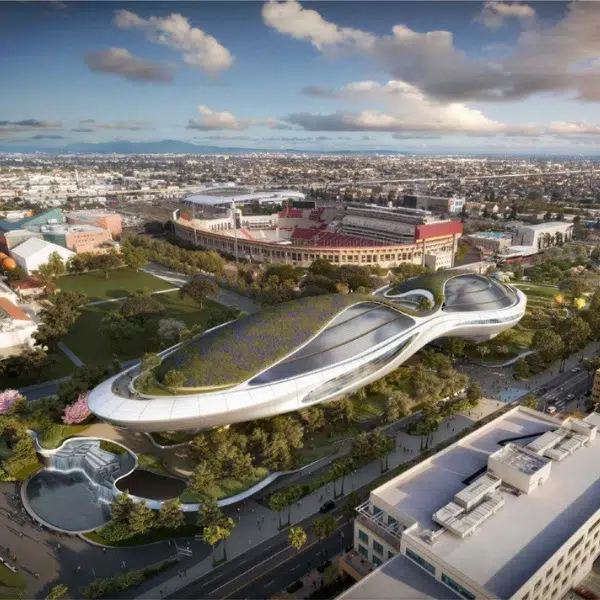
Chengdu, China, is an important hub for the science fiction community, having launched the careers of many important Chinese authors over the past 50 years. To honor this heritage, the city commissioned Zaha Hadid Architects (ZHA) to design the new Chengdu Science Fiction Museum. The futuristic building is situated in the core area of Jingrong Lake within the Science & Innovation New City of Chengdu’s Pidu District and appears to float on water.
The fluid forms of the roof radiate out from a central point, emulating an expanding nebula cloud with a star at its center. Using defined pedestrian routes, guests are invited to visit different activity zones on a journey of discovery that weaves between indoor and outdoor plazas.
The interior was created with the goal of hosting the widest array of events possible. Its 59,000 square meters of space includes exhibition galleries, a multi-function hall, a conference center, and supporting ancillary spaces. Since opening, it's already attracting major events, including the World Science Fiction Convention (Worldcon) and Hugo Awards, both of which had never taken place in China before.
In keeping with ZHA's design philosophy, the museum is integrated into the natural landscape and meets China’s Green Building Program's highest 3-star standards. The museum’s natural hybrid ventilation optimizes Chengdu’s mild subtropical climate to provide comfort for visitors and staff throughout the year, while photovoltaics within the museum’s large roof canopy contribute to meeting the building’s energy demands.
The park surrounding the museum is landscaped with plants native to the region, which collect and store rainwater for natural filtration and reuse. This enables Jingrong Lake to become an integral part of Chengdu’s sustainable drainage system that will mitigate flooding and increase biodiversity throughout the city.
In the short time it has been open, the Chengdu Science Fiction Museum is already fulfilling its role as a center of innovation and inspiration that connects the past, present, and future.
Zaha Hadid Architects has designed the new Chengdu Science Fiction Museum in China.
The museum honors the city's role as a hub for the science fiction community.


The fluid form of the roof resembles a nebula cloud with a star at its center.


The 59,000 square meter space has a flexible interior that allows the museum to host a wide variety of events.




The museum is already fulfilling its role as a center of innovation and inspiration that connects the past, present, and future.

























































































